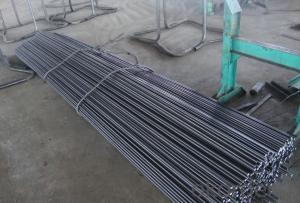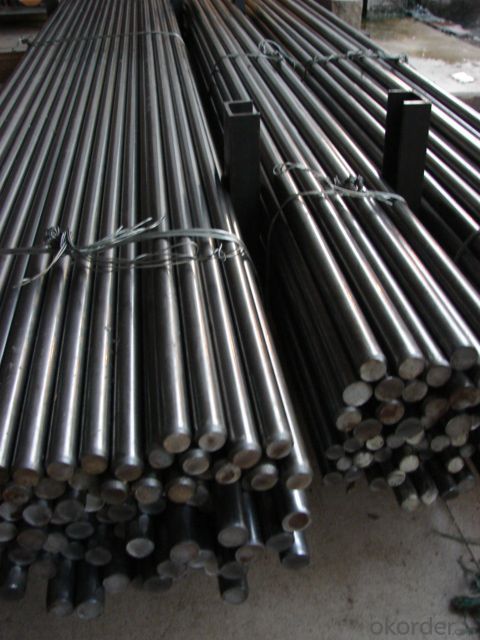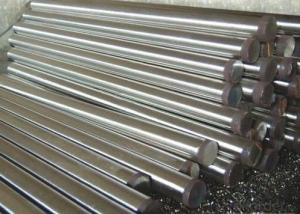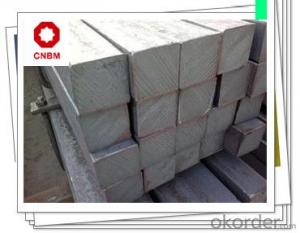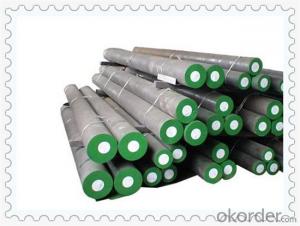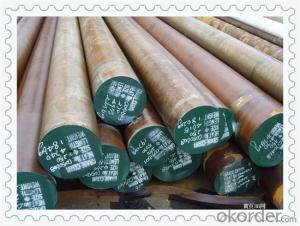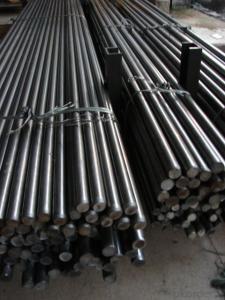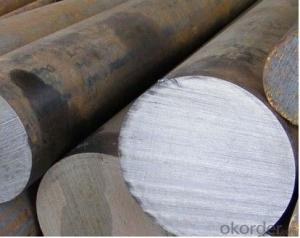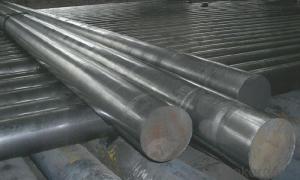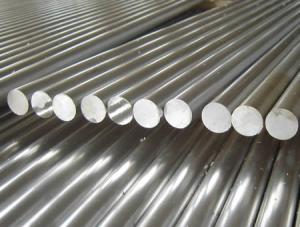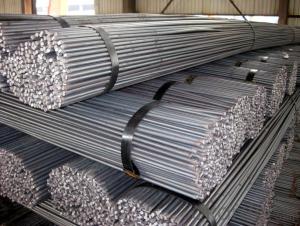Steel Round Bar Cold Drawn with High Qaulity for Construction
- Loading Port:
- China main port
- Payment Terms:
- TT or LC
- Min Order Qty:
- 25 m.t.
- Supply Capability:
- 50000 m.t./month
OKorder Service Pledge
OKorder Financial Service
You Might Also Like
Product Description:
OKorder is offering Steel Round Bar Cold Drawn with High Qaulity for Construction at great prices with worldwide shipping. Our supplier is a world-class manufacturer of steel, with our products utilized the world over. OKorder annually supplies products to European, North American and Asian markets. We provide quotations within 24 hours of receiving an inquiry and guarantee competitive prices.
Product Applications:
Steel Round Bar Cold Drawn with High Qaulity for Construction are ideal for structural applications and are widely used in the construction of buildings and bridges, and the manufacturing, petrochemical, and transportation industries.
Product Advantages:
OKorder's Steel Round Bar Cold Drawn with High Qaulity for Construction are durable, strong, and resist corrosion.
Main Product Features:
· Premium quality
· Prompt delivery & seaworthy packing (30 days after receiving deposit)
· Corrosion resistance
· Can be recycled and reused
· Mill test certification
· Professional Service
· Competitive pricing
Packaging & Delivery of Steel Round Bar Cold Drawn with High Qaulity for Construction:
Packaging Detail: products are packed in bundle and then shipped by container or bulk vessel, deformed bar is usually naked strapping delivery, when storing, please pay attention to moisture proof. The performance of rust will produce adverse effect.
Each bundle weight: 2-3MT, or as required
Payment term: TT or L/C
Delivery Detail: within 45 days after received advanced payment or LC.
Label: to be specified by customer, generally, each bundle has 1-2 labels
Trade terms: FOB, CFR, CIF
FAQ:
Q1: Why buy Materials & Equipment from OKorder.com?
A1: All products offered byOKorder.com are carefully selected from China's most reliable manufacturing enterprises. Through its ISO certifications, OKorder.com adheres to the highest standards and a commitment to supply chain safety and customer satisfaction.
Q2: What makes stainless steel stainless?
A2: Stainless steel must contain at least 10.5 % chromium. It is this element that reacts with the oxygen in the air to form a complex chrome-oxide surface layer that is invisible but strong enough to prevent further oxygen from "staining" (rusting) the surface. Higher levels of chromium and the addition of other alloying elements such as nickel and molybdenum enhance this surface layer and improve the corrosion resistance of the stainless material.
Q3: Can stainless steel rust?
A3: Stainless does not "rust" as you think of regular steel rusting with a red oxide on the surface that flakes off. If you see red rust it is probably due to some iron particles that have contaminated the surface of the stainless steel and it is these iron particles that are rusting. Look at the source of the rusting and see if you can remove it from the surface.
Images:
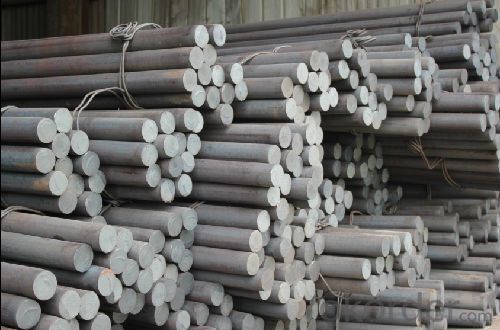
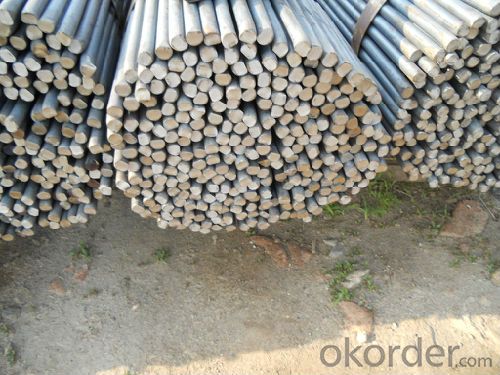
- Q: Are steel round bars used in the construction industry?
- Steel round bars are widely utilized in the construction industry due to their versatility. They find applications in reinforcing concrete structures, providing structural support in buildings, and fabricating components for bridges, highways, and other infrastructure projects. These bars possess remarkable strength and durability, enabling them to endure heavy loads and harsh environmental conditions. Moreover, their uniform shape and smooth surface facilitate easy welding, bending, and machining, rendering them an excellent option for construction endeavors.
- Q: Can steel round bars be used in the manufacturing of gears?
- Yes, steel round bars can be used in the manufacturing of gears. Steel round bars are often used in gear manufacturing due to their high strength, durability, and excellent machinability. They can be forged, cut, and shaped into the desired gear shape, providing the necessary strength and precision required for gear applications.
- Q: How do steel round bars perform under cyclic loading?
- Steel round bars generally perform well under cyclic loading due to their high strength and ductility. The ability of steel to withstand repeated loading and unloading without significant deformation or failure makes it suitable for applications where cyclic loading is present, such as in structural engineering, automotive components, and machinery. However, the performance of steel round bars under cyclic loading also depends on factors like the quality of the steel, design considerations, and the magnitude and frequency of the cyclic loading.
- Q: Can steel round bars be used for making springs or suspension components?
- Yes, steel round bars can be used for making springs or suspension components. Steel is a commonly used material for these applications due to its high strength and durability. The round bar shape allows for easy fabrication and customization according to the specific requirements of the springs or suspension components.
- Q: Why can't the grounding device be replaced by steel bar instead of round steel?
- The mechanical strength of the steel thread is destroyed. Because the supporting point is only the ground, it is easy to cut the steel directly if the thread is not vertical. Therefore, we need to use angle iron, steel pipe or smooth steel round bar.
- Q: What are the advantages of using nickel-zinc alloy steel round bars?
- There are several advantages to using nickel-zinc alloy steel round bars. Firstly, they offer excellent corrosion resistance, making them ideal for applications in harsh environments or where exposure to moisture is a concern. Secondly, these round bars exhibit high strength and toughness, making them suitable for heavy-duty applications that require a reliable and durable material. Additionally, nickel-zinc alloy steel round bars have good heat resistance, allowing them to withstand elevated temperatures without significant deformation or loss of mechanical properties. Overall, these advantages make nickel-zinc alloy steel round bars a versatile and reliable choice for various industrial and construction applications.
- Q: Can steel round bars be used for making interior components?
- Yes, steel round bars can be used for making interior components. Steel is a durable and versatile material that can be shaped and formed into various designs and structures. Round bars are particularly suitable for creating interior components such as handrails, staircases, furniture frames, and decorative elements. They provide strength, stability, and an aesthetic appeal to interior spaces. Additionally, steel round bars can be easily welded, bent, or cut to meet specific design requirements, making them an ideal choice for custom-made interior components.
- Q: Why is round steel more expensive than thread steel?
- Thread steel is generally used for building convenience. Round steel is widely used in industrial manufacturing and processing. And, as mentioned above, there are many kinds of round steel materials, and there is not much comparability between the prices.
- Q: Are steel round bars suitable for the production of hydraulic cylinders?
- Yes, steel round bars are suitable for the production of hydraulic cylinders. Steel is a material known for its strength, durability, and resistance to corrosion, making it an excellent choice for hydraulic applications. Steel round bars are often used in the construction of hydraulic cylinders due to their high tensile strength and ability to withstand heavy loads and pressure. Additionally, steel can be easily machined and welded, allowing for precise manufacturing and customization of hydraulic cylinders. Overall, steel round bars provide the necessary qualities and performance required for the production of hydraulic cylinders.
- Q: What is the maximum temperature a steel round bar can withstand?
- The maximum temperature that a steel round bar can withstand depends on the specific grade and composition of the steel. Generally, most steel alloys can withstand temperatures up to around 1200°C (2200°F) before experiencing significant structural changes or loss of strength. However, it is always recommended to consult the manufacturer's specifications or engineering data for the specific steel alloy in question to determine its maximum temperature tolerance.
Send your message to us
Steel Round Bar Cold Drawn with High Qaulity for Construction
- Loading Port:
- China main port
- Payment Terms:
- TT or LC
- Min Order Qty:
- 25 m.t.
- Supply Capability:
- 50000 m.t./month
OKorder Service Pledge
OKorder Financial Service
Similar products
Hot products
Hot Searches
